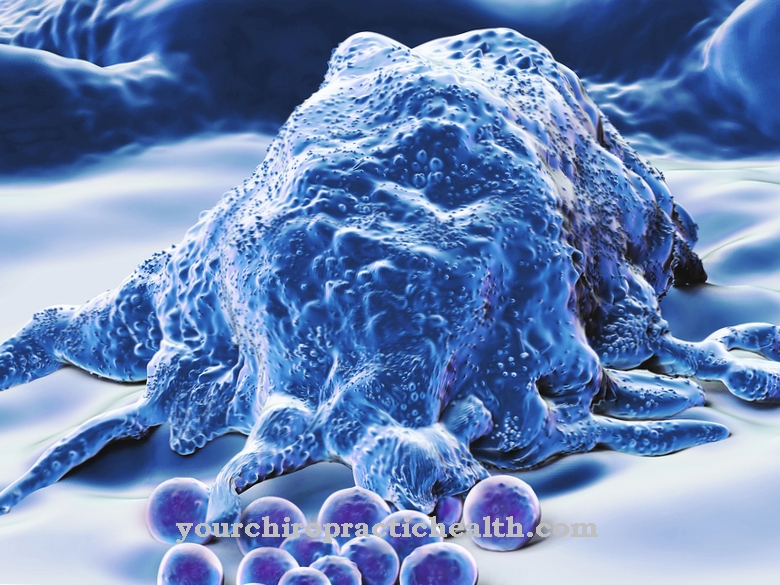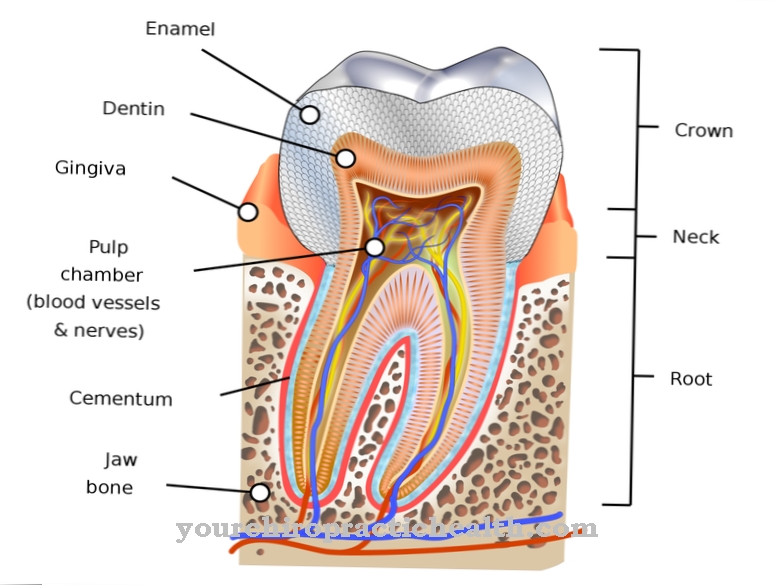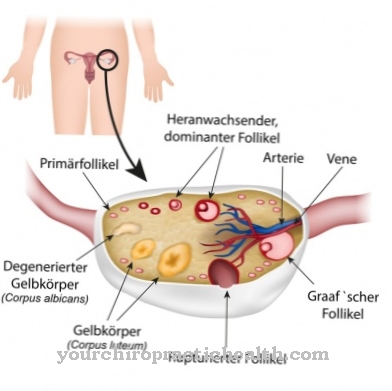The Plantar fascia is located in the area of the sole of the foot. It fulfills important static and protective functions.
What is the plantar fascia?
An aponeurosis is a flat tendon or tendon plate. The term plantar is a place name and comes from Planta pedis = sole of the foot. The compound name plantar fascia describes a tendon plate in the area of the sole of the foot.
In the narrower sense, the term aponeurosis is not used quite correctly here because another characteristic is missing. Tendons are by definition the connective tissue origin and attachment structures of muscles. They attach the muscle to the bone. Flat tendons occur in flat muscles, for example in the oblique abdominal muscles. The tendon of origin of the flexor digitorum brevis muscle on the heel bone is fused with the plantar fascia, but it still forms an independent connective tissue structure with independent functions.
The tissue composition and the tissue properties correspond to those of a firm, tough tendon. Some authors assign them to fascia tissue and therefore use the term plantar fascia.
Anatomy & structure
Similar to muscles, tendons and ligaments, aponeuroses have a systematic structure of bundle-like units.
In addition to the basic substance (matrix) and fatty bodies, there are massive accumulations of collagen fibers in the fiber bundles, which give the structure an enormous tensile strength. They are aligned with the direction of pull and are also arranged in layers in the plantar fascia.
The tendon plate arises on the underside of the calcaneus, on the calcaneal tuberosity. From there it first runs as a path towards the toes. In the middle area of the sole of the foot, it divides into 5 fiber strands that draw in a delta shape towards the toes. The closed formation dissolves there and spaces are created between the 5 bundles. The insertion of the plantar fascia is in the area of the metatarsophalangeal joints, where the lines radiate into the joint capsules, ligaments and the tendons of the toe flexors. At the level of the heads of the metatarsals, there are regularly two transverse fiber strands that connect the longitudinal reins and establish a connection to the inner and outer edge of the foot.
On the outside, the plantar fascia is firmly attached to the skin via connective tissue bridges. In the area of these connections, hollow chambers are created in which fatty tissue is stored. In this way, a relatively thick, cushion-like fabric is formed.
Function & tasks
The plantar fascia is a very important structure on the foot with many functions. Together with the skin, it forms the protective cover to the outside. The penetration of foreign bodies and pathogens into deeper sensitive layers is prevented or made more difficult.
The special connection between the skin and the plantar fascia with the pressure pad construction provides an effective buffer when standing and walking. Loads are not transferred as quickly and as intensely to the deeper structures, especially not to the bones. The fixed cross connections prevent the skin from moving, which is usually the case; it is fixed. This mechanism has a positive effect on stability and is an important stability component.
Another important function of the plantar fascia is to protect the underlying structures. In addition to the muscle bellies and tendons of the muscles pulling along there, these are primarily vessels and nerves. Most of these run under the covered surfaces of the plantar fascia. They exit in the gaps and get to their respective coverage areas.
The mechanically most important function of the plantar fascia is its participation in the arch structure of the foot, which is made up of longitudinal and transverse arches. The pillars of this architecture are the 3 contact points on the heel, the ball of the big toe and the ball of the little toe. The structure consists of 3 layers. The inner part is formed by the bones of the foot skeleton, the middle ligament and the outer part by the plantar fascia with the muscles and tendons running there. Because of their expansion and the associated better leverage, their degree of effectiveness on the longitudinal arch is greater than that of the other structures. The cross connections only provide a small additional function for the transverse arch.
Diseases
Plantar fascitis is a typical overload syndrome in which painful irritation of the plantar fascitis develops. In rare cases, tears can also occur in the tissue.
This disease process occurs relatively frequently in runners, especially when poor footwear is used and the surface is very hard and not very springy. The development of a calcaneal spur can result from persistent or recurrent irritation. In the acute phase, regular occurrence is not possible or only possible to a limited extent due to pain. This creates unfavorable stress torques in the knee and hip joints and in the spine.
The most important complex of complaints that affects the plantar fascia or is even caused by it are foot deformities such as flat, splayfoot and flat feet. In the case of the arches, the longitudinal arch is flattened or no longer present, with the splayfoot the same applies to the transverse arch and with the flat foot both constructions are affected. There are various triggers for this problem, such as axial misalignments of the knee joints or fractures with defect healing in the area of the tarsal and ankle joints.
In people with a congenital weakness of the connective tissue, all supporting ligaments, tendons and also the plantar fascia are too slack and can no longer optimally support the vaults, they sink. A significant reinforcement for this process is excess weight, which significantly increases the load on the supporting structures. To a certain extent, appropriate training of the muscles involved can delay or slow down the decay of the vaults. If the process has progressed so far that the inner tarsal row slips off the outer one, active measures can no longer achieve anything.
In order to reduce discomfort and to avoid unfavorable static changes in other joints and the spine, insoles are usually prescribed.












.jpg)



.jpg)










.jpg)
